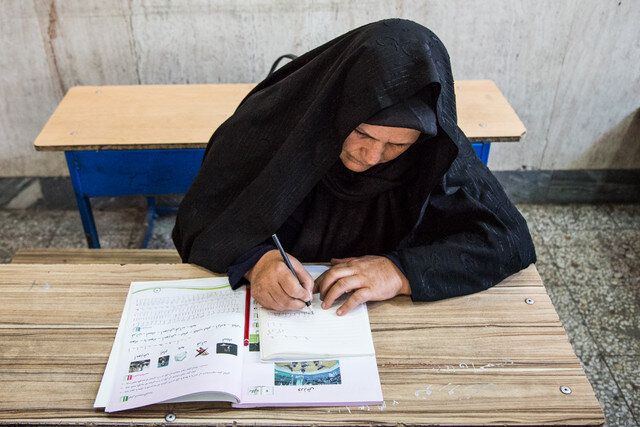Iran close to eradicating illiteracy

TEHRAN – September 8 is International Literacy Day. In Iran, effective measures have been taken to increase the literacy rate, which has surpassed 96 percent.
Before the Islamic Revolution, the country's literacy rate was 48 percent as some 14.2 million people (52.5%) were illiterate.
One year after the Islamic Revolution and due to the importance and necessity of literacy, by the order of Imam Khomeini (RA), in December 1979, the Literacy Movement Organization was established to eliminate illiteracy in the country.
After the establishment of the organization in 1986, nearly 11 million people were added to the country's literate, and the country's literacy rate increased from 47.5 percent to about 61.8 percent.
According to the latest census, the literacy rate is 96.2 percent, which increases by 0.5 percent every year. Also, 400,000 illiterate people are covered by the Literacy Movement every year, 50 percent of whom are functionally illiterate.
Currently, the number of illiterate people is less than one million. Now, only five out of every 100 Iranians are illiterate, Shapour Mohammadzadeh, head of the Literacy Movement Organization said.
According to the latest census, the literacy rate is 96.2 percent, which increases by 0.5 percent every year. Now the distribution of illiteracy in the provinces is very high, in some provinces one illiterate can be found every 20 square kilometers.
Mohammadzadeh expressed hope to soon celebrate the eradication of illiteracy in the provinces where the literacy rate is 98 percent. Now 50 percent of the activities of the Literacy Movement Organization are focused on consolidating and transferring literacy so that there is no return to illiteracy.
Referring to the gender gap in literacy rate, he said the results of the census conducted between 1976 and 2016 show the gender gap in literacy rate has decreased from 23.4 to 6.8 percent and in 2020 reached less than 6.1 percent.
By allocating about 80 percent of literacy activities to girls and women, especially in rural areas, the literacy index among women has increased more rapidly, he said, adding that the literacy rate of women before the revolution was 26.2 percent in the age group of 10 to 49 years, which has now reached 90 percent, he said.
Currently, 332,000 foreign nationals are covered by the movement, and in total, 830,000 foreign nationals have become literate, he stated.
According to statistics, about 98.13 percent of school-age children are studying and less than 2 percent are out of school.
A plan is also being implemented with the aim of raising the literacy index and the level of awareness of the country's nomadic community in coordination with the Nomadic Affairs Organization of Iran.
Since its inception, the project has been able to educate more than 314,000 nomadic women and girls under the auspices of literacy courses by empowering thousands of literate educators in nomadic and rural communities.
International Literacy Day
Since 1967, International Literacy Day (ILD) celebrations have taken place annually around the world to remind the public of the importance of literacy as a matter of dignity and human rights, and to advance the literacy agenda toward a more literate and sustainable society.
Despite progress made, literacy challenges persist with at least 771 million young people and adults lacking basic literacy skills today.
In the aftermath of the pandemic, nearly 24 million learners might never return to formal education, out of which, 11 million are projected to be girls and young women.
This year’s International Literacy Day will be celebrated worldwide under the theme, Transforming Literacy Learning Spaces, and will be an opportunity to rethink the fundamental importance of literacy learning spaces to build resilience and ensure quality, equitable, and inclusive education for all.
FB/MG
Leave a Comment